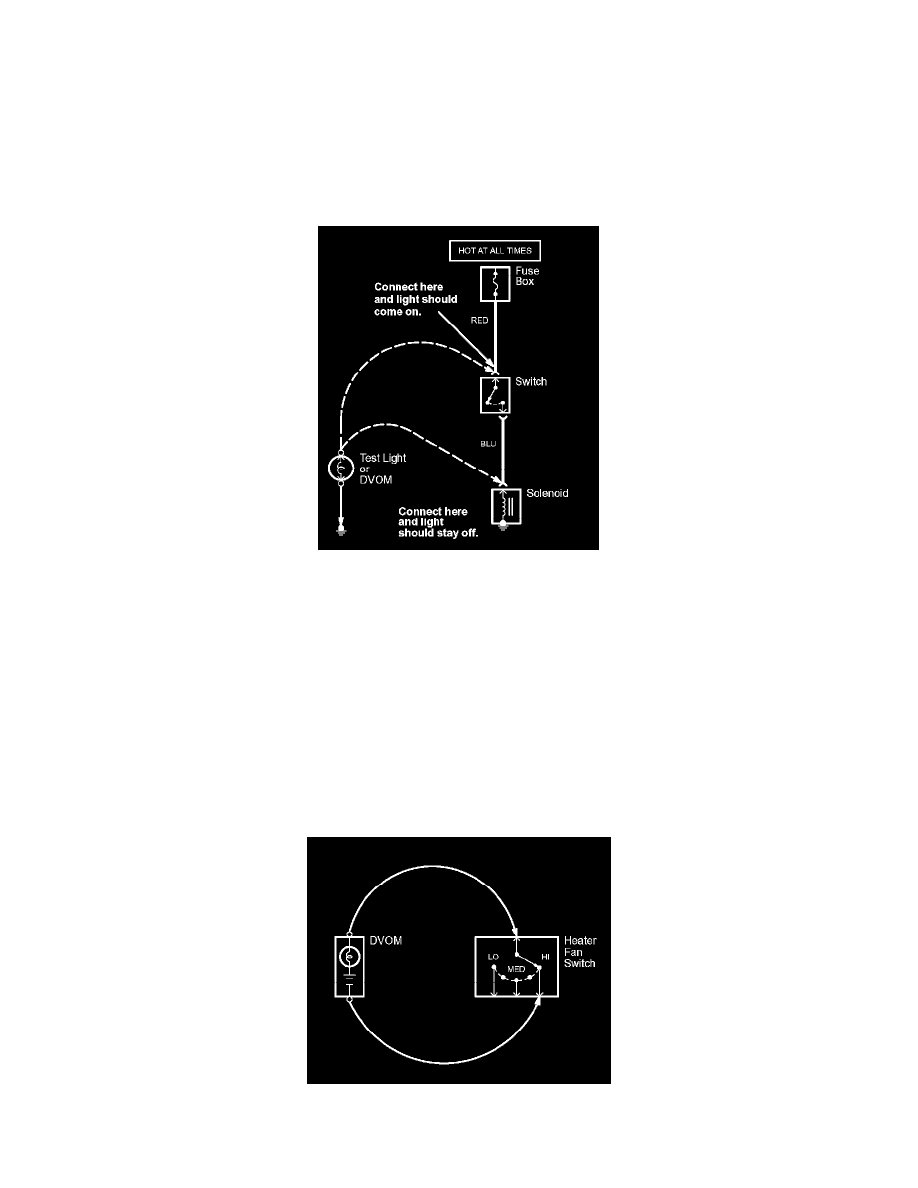Civic L4-1.3L Hybrid (2008)

-
Most circuits include solid-state devices. Test the voltages in these circuits only with a 10-mega ohm or higher impedance digital multimeter.
Never use a test light or analog meter on circuits that contain solid-state devices. Damage to the devices may result.
Troubleshooting Tests
Troubleshooting Tests
Testing for Voltage
When testing for voltage at a connector without wire seals, you do not have to separate the two halves of the connector. Instead, probe the connector
from the back. Always check both sides of the connector because dirty, corroded, and bent terminals can cause problems (no electrical contact = an
open).
1. Connect one lead of the test light to a known good ground, or, if you're using a digital volt ohmmeter (DVOM), place it in the appropriate DC
volts range, and connect its negative lead to ground.
2. Connect the other lead of the test light or DVOM to the point you want to check.
3. If the test light glows, there is voltage present. If you're using a DVOM, note the voltage reading. It should be within one volt of measured battery
voltage. A loss of more than one volt indicates a problem.
NOTE: Always use a DVOM on high impedance circuits. A test light may not glow (even with battery voltage present).
Testing for Continuity
When testing for continuity at a connector without wire seals, you do not have to separate the two halves of the connector. Instead, probe the connector
from the back. Always check both sides of the connector because dirty, corroded, and bent terminals can cause problems (no electrical contact = an
open).
1. Disconnect the negative cable from the car battery. If you're using a DVOM, place it in the lowest "OHMS" range.
2. Connect one lead of a self-powered test light or DVOM to one end of the part of the circuit you want to test.
3. Connect the other lead to the other end.
